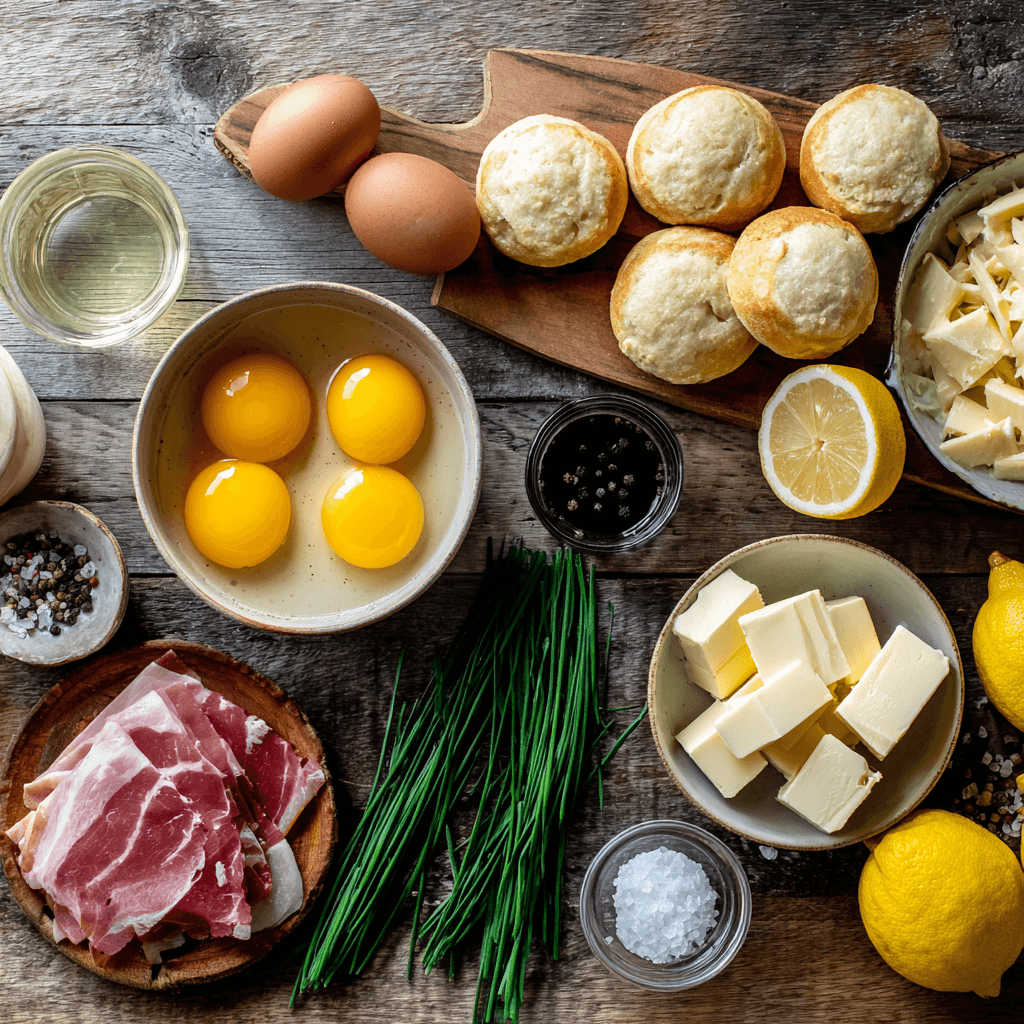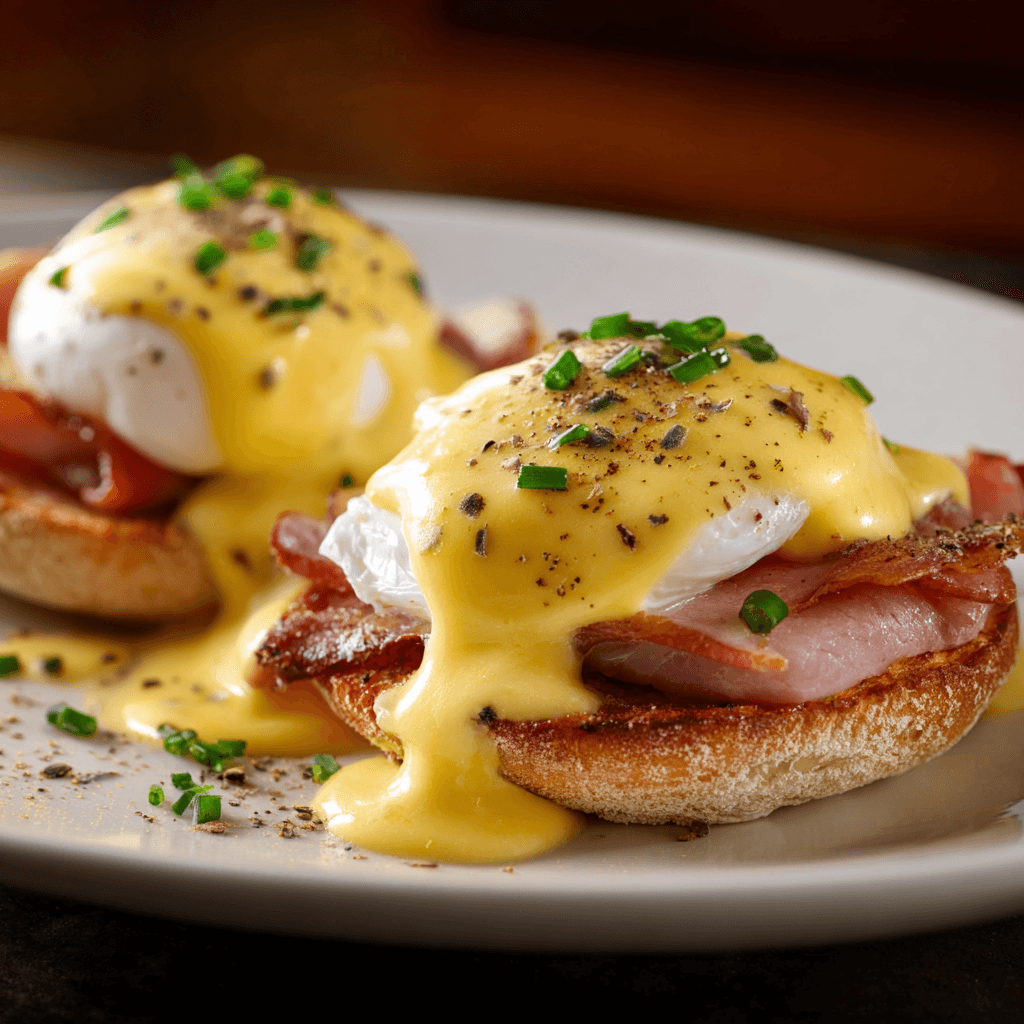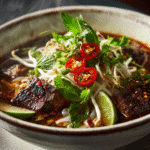Table of Contents
Gordon Ramsay Eggs Benedict transforms a simple brunch dish into culinary perfection. After twenty years of cooking in high-pressure situations—first as a firefighter grabbing quick meals between calls, then mastering technique at home—I’ve learned that this classic requires the same precision as emergency response work. One wrong move with the hollandaise, and you’re starting over. The FDA emphasizes proper egg handling techniques that become crucial when you’re working with both poached eggs and emulsion sauces. This Gordon Ramsay Eggs Benedict recipe eliminates the guesswork that leaves most home cooks frustrated with broken sauces and rubbery eggs. Just like Gordon Ramsay’s scrambled eggs technique, this method relies on temperature control and timing rather than luck.
Why This Gordon Ramsay Eggs Benedict Recipe Works (And Where Most Go Wrong)
The genius of Gordon Ramsay Eggs Benedict lies in three fundamental principles that most recipes completely ignore. First, temperature layering—each component requires a different heat level, and timing their convergence separates restaurant-quality results from soggy disasters. Second, sauce stability through proper emulsification technique rather than hoping your hollandaise doesn’t break. Third, ingredient quality hierarchy—not everything needs to be premium, but the butter and eggs absolutely must be.
The Emulsification Science
Most home cooks fail because they treat hollandaise like scrambled eggs, when it’s actually a warm mayonnaise. The science behind stable emulsions shows that lecithin in egg yolks needs gradual fat incorporation at 140-160°F. Rush this process, and you get expensive scrambled eggs with butter puddles.
Component Timing Strategy
Gordon Ramsay Eggs Benedict fails when components go cold while you’re frantically trying to poach eggs. Professional kitchens use holding techniques—warm plates, sauce bain-marie, and coordinated cooking sequences that home cooks never learn.
Ingredients That Actually Matter for Gordon Ramsay Eggs Benedict

Not all ingredients carry equal weight in Gordon Ramsay Eggs Benedict success. The eggs and butter determine 80% of your final result quality, while the English muffin and ham serve as supporting players. For eggs, choose the freshest possible—ideally no more than a week old. Fresh eggs hold together during poaching instead of creating wispy, stringy messes in the water.
European-style butter with 82% fat content makes hollandaise infinitely more stable than standard American butter at 80% fat. That 2% difference provides enough extra fat molecules to create stronger emulsion bonds. Don’t substitute margarine or lower-fat alternatives—they lack the fat structure for proper sauce formation.
For the ham, thick-cut Canadian bacon works better than paper-thin slices that become chewy when warmed. The English muffin should be sturdy enough to support weight without disintegrating—Thomas’s or similar commercial brands actually outperform artisanal versions here. Quality matters most in your foundation ingredients, just like how Gordon Ramsay’s hollandaise technique emphasizes butter quality above all else.
Step-by-Step Instructions for Gordon Ramsay Eggs Benedict
Phase 1: Hollandaise Preparation
Fill a saucepan with 2 inches of water and bring to a gentle simmer. In a heatproof bowl that fits over the pan without touching water, whisk 3 egg yolks with 1 tablespoon lemon juice and a pinch of salt. Never let the bowl bottom touch the simmering water—direct contact will scramble your yolks instantly. Place the bowl over the simmering water and whisk constantly for 2-3 minutes until the mixture thickens slightly and lightens in color.
Remove the bowl from heat and begin adding 8 tablespoons of cubed butter, one piece at a time, whisking vigorously after each addition. The sauce should thicken and become glossy. If it breaks, remove from heat immediately and whisk in 1 tablespoon of cold water. Season with cayenne, salt, and additional lemon juice to taste. Keep warm in the double boiler with heat turned off.
Phase 2: Poaching Setup and Eggs
Fill a large, wide saucepan with 4 inches of water and bring to a rolling boil. Add 2 tablespoons white vinegar—this helps egg proteins coagulate faster and reduces wispy tendrils. Crack each egg into individual small bowls before poaching—never crack directly into the water. This technique, borrowed from Gordon Ramsay’s poaching method, prevents disasters and allows better control.
Reduce heat to maintain gentle bubbling, not violent boiling. Create a small whirlpool with a spoon, then carefully tip one egg bowl into the center. The swirling water helps the egg white wrap around the yolk. Cook for 3-4 minutes for runny yolks, then remove with a slotted spoon. Test doneness by gently pressing the yolk—it should feel soft but set, not liquid. Repeat with remaining eggs.
Phase 3: Assembly and Service
Toast English muffin halves until golden and crispy. Warm Canadian bacon slices in a dry skillet for 1 minute per side. Place muffin halves on warmed plates, top each with a slice of ham, then carefully place poached eggs on top. Spoon warm hollandaise generously over each egg, allowing it to cascade down the sides. Garnish with fresh chives and a light dusting of paprika. Serve immediately while everything is hot.
Pro-Tips That Change the Game
- Add a tablespoon of butter to your poaching water—it creates a thin film that helps eggs slide in smoothly without sticking to the pan bottom
- Make hollandaise up to 2 hours ahead and keep warm in a thermos—this eliminates last-minute stress and ensures perfect temperature
- Use a shallow, wide pan for poaching rather than a tall, narrow pot—eggs spread less and maintain better shape
- Warm your serving plates in a 200°F oven—cold plates instantly cool all your carefully heated components
- Trim poached egg whites with kitchen shears before plating—removes the straggly bits for restaurant presentation
- Save broken hollandaise by whisking it into a fresh egg yolk in a clean bowl—the lecithin will re-emulsify the sauce
Storage & Leftovers for Gordon Ramsay Eggs Benedict
Gordon Ramsay Eggs Benedict doesn’t store well as a complete dish—the components break down and create food safety concerns. However, hollandaise can be refrigerated for up to 2 days and gently rewarmed in a double boiler, whisking constantly. Never microwave hollandaise, as it will break immediately.
Poached eggs can be prepared up to 3 days ahead and stored in ice water in the refrigerator. Reheat by dropping into simmering water for 30 seconds. The FDA recommends keeping egg dishes below 40°F and consuming within 3-4 days. Never leave assembled eggs benedict at room temperature for more than 2 hours due to the risk of bacterial growth in the hollandaise.

Gordon Ramsay Eggs Benedict
Ingredients
Equipment
Method
- 1️⃣ Fill a saucepan with 2 inches of water and bring to a gentle simmer. In a heatproof bowl that fits over the pan without touching water, whisk 3 egg yolks with 1 tablespoon lemon juice and a pinch of salt.
- 2️⃣ Place the bowl over the simmering water and whisk constantly for 2-3 minutes until the mixture thickens slightly and lightens in color. Never let the bowl bottom touch the simmering water.
- 3️⃣ Remove the bowl from heat and begin adding 8 tablespoons of cubed butter, one piece at a time, whisking vigorously after each addition. The sauce should thicken and become glossy.
- 4️⃣ Season hollandaise with cayenne, salt, and additional lemon juice to taste. Keep warm in the double boiler with heat turned off.
- 5️⃣ Fill a large, wide saucepan with 4 inches of water and bring to a rolling boil. Add 2 tablespoons white vinegar. Crack each egg into individual small bowls.
- 6️⃣ Reduce heat to maintain gentle bubbling. Create a small whirlpool with a spoon, then carefully tip one egg bowl into the center. Cook for 3-4 minutes for runny yolks.
- 7️⃣ Remove poached eggs with a slotted spoon. Test doneness by gently pressing the yolk—it should feel soft but set, not liquid. Repeat with remaining eggs.
- 8️⃣ Toast English muffin halves until golden and crispy. Warm Canadian bacon slices in a dry skillet for 1 minute per side.
- 9️⃣ Place muffin halves on warmed plates, top each with a slice of ham, then carefully place poached eggs on top. Spoon warm hollandaise generously over each egg.
- 🔟 Garnish with fresh chives and a light dusting of paprika. Serve immediately while everything is hot.
Nutrition
Notes
Tried this recipe?
Let us know how it was!Frequently Asked Questions About Gordon Ramsay Eggs Benedict
What is Gordon Ramsay’s Eggs Benedict?
Gordon Ramsay’s Eggs Benedict elevates the classic brunch dish through precise technique and temperature control. His version emphasizes stable hollandaise made with a proper double boiler method, perfectly poached eggs with firm whites and runny yolks, and coordinated timing so all components reach the plate hot. The key difference is his focus on emulsification science rather than guesswork.
What are common Eggs Benedict mistakes?
The biggest Gordon Ramsay Eggs Benedict mistakes include broken hollandaise from overheating, stringy poached eggs from old eggs or rolling boil water, and cold components from poor timing. Many home cooks also use insufficient butter quality, skip the vinegar in poaching water, or attempt to reheat hollandaise in the microwave, which breaks the emulsion instantly.
What are 5 interesting facts about Gordon Ramsay?
Gordon Ramsay trained under Marco Pierre White and Guy Savoy before opening his first restaurant in 1998. He’s earned 16 Michelin stars throughout his career, played semi-professional soccer before cooking, holds a black belt in karate, and has completed multiple Ironman triathlons. His television career spans over 20 years across multiple continents, making him one of the most recognized chefs globally.
How does Gordon Ramsay boil eggs perfectly?
Gordon Ramsay’s perfect poached eggs start with the freshest possible eggs and a wide, shallow pan with simmering (not boiling) water. He adds white vinegar to help proteins set quickly, cracks eggs into individual bowls first, creates a gentle whirlpool, then slides eggs into the center. The timing is exactly 3-4 minutes for runny yolks, and he tests doneness by gently pressing the yolk through the white.
Mastering Gordon Ramsay Eggs Benedict takes practice, but the fundamental techniques—stable emulsification, gentle poaching, and coordinated timing—will transform your brunch game forever. Once you nail the hollandaise consistency and poaching technique, you’ll wonder why you ever found this dish intimidating.
Stay safe,
Jack Sullivan


